Engineering Mechanics: Unit IV: Friction
Solved Example & Practice Problems: Wedge Friction
Examples for Practice: Wedge Friction - Friction - Engineering Mechanics
Wedge Friction Example 8.10.1 A block 'A' weighing 80 kN is to be moved towards left by light wedge B. Find necessary force 'P', if angle of friction at all rubbing surfaces is 15°. Refer Fig. 8.10.2 Solution: Example 8.10.2 Determine the minimum force 'P' required to overcome static friction and begin to lift 100 N block 'A' shown in Fig. 8.10.3. The weight of 20° wedge 'B' is 5 N and the coefficient of static friction between all surfaces is 0.4. Solution: The two free body diagrams are shown in Fig. 8.10.3 (a). Example 8.10.3 A block of 1000 N is to be raised up by means of force P each acting on wedges as shown in Fig. 8.10.4. If angle of friction at all rubbing surfaces is 15°, determine P. Ignore weight of wedge. Solution : Example 8.10.4 Find the minimum horizontal force 'P' to be applied to block 'A' weighing 500 N so as to keep block 'B' of 1500 N in limiting condition of equilibrium. Refer Fig. 8.10.5. Solution: For minimum force P, block B has tendency to move downward and A has tendency to move towards left. The F.B.D. of blocks A and B are shown in Fig. 8.10.5 (a). Example 8.10.5 Block A supports a pipe column and rests, as shown in Fig. 8.10.6, on wedge B. μs = 0.25 at all surfaces of contact. Determine: a) The angle 0 for which sliding is impending, and b) The corresponding force exerted on the block by the vertical wall. Solution: The impending motion of A is downwards while that of B is towards right. The free body diagrams are shown in Fig. 8.10.6 (a). Examples for Practice Q.1 Determine the horizontal force 'P' required for wedge 'B' to raise the block 'A' of weight 4500 N as shown in Fig. 8.10.7 coefficient of friction on all the surfaces is 0.2. [Ans.: 3467.95 N] Q.2 A block A weighing 1000 N is to be raised by applying a horizontal force P on another block B as shown in Fig. 8.10.8. Calculate the minimum force P to push the block A up. Take μ = 0.25 at all faces. [Ans. : 3535.72 N]Solved Examples for Understanding
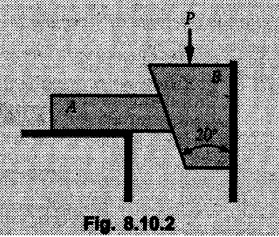

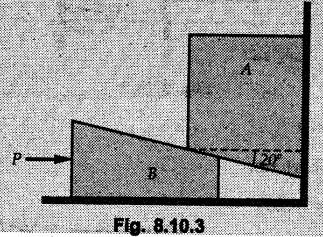

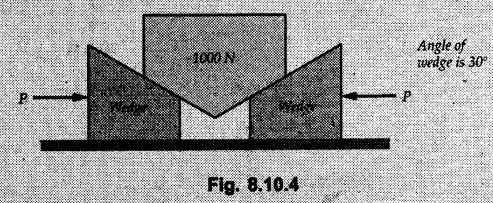
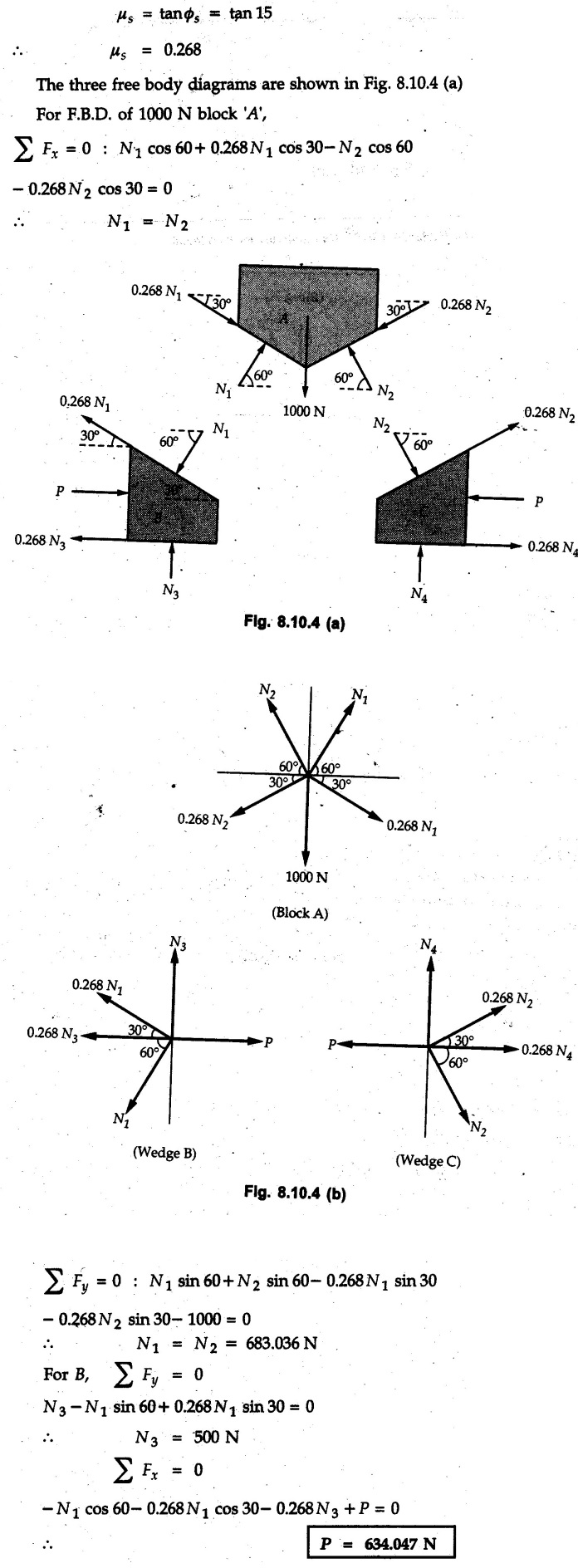
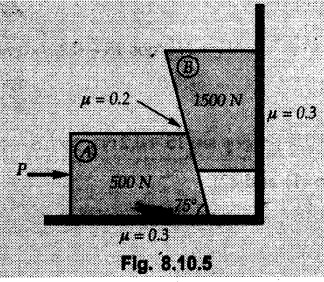

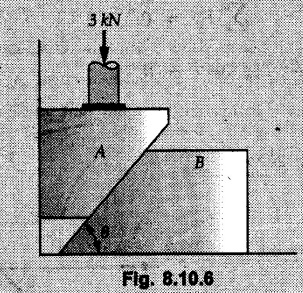


Engineering Mechanics: Unit IV: Friction : Tag: : - Solved Example & Practice Problems: Wedge Friction
Related Topics
Related Subjects
Engineering Mechanics
ME3351 3rd semester civil, Mechanical Dept | 2021 Regulation | 3rd Semester Mechanical Dept 2021 Regulation
